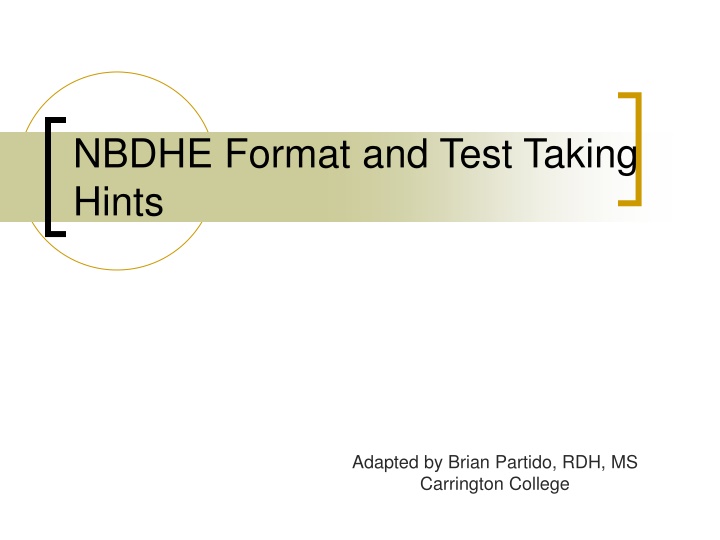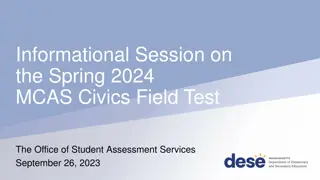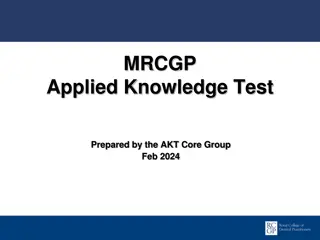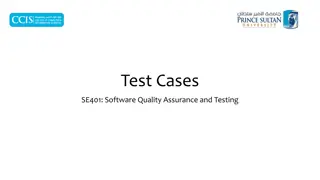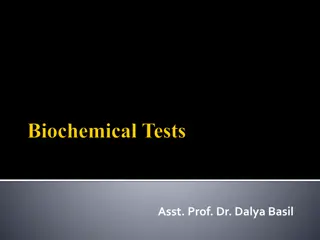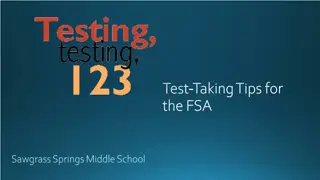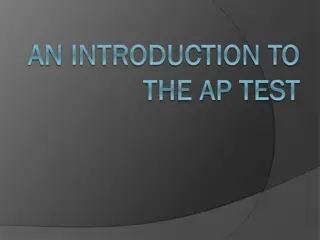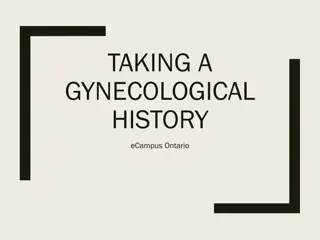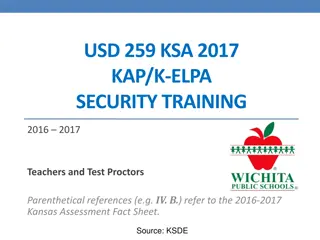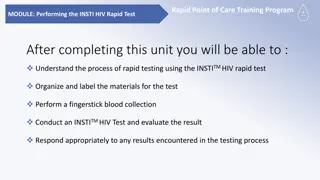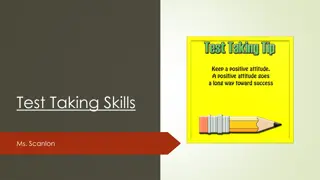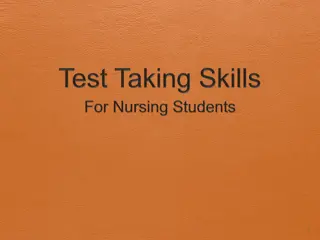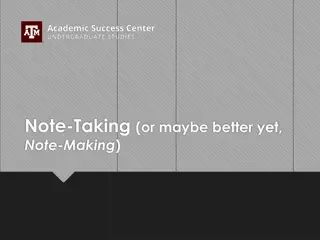Comprehensive Guide to NBDHE Format and Test-Taking Hints
Learn about the National Board Dental Hygiene Examination (NBDHE) format, question types, test-taking hints, and preparation tips. Understand the composition of questions, types of questions, and see sample questions with correct answers to excel in your exam.
Download Presentation

Please find below an Image/Link to download the presentation.
The content on the website is provided AS IS for your information and personal use only. It may not be sold, licensed, or shared on other websites without obtaining consent from the author.If you encounter any issues during the download, it is possible that the publisher has removed the file from their server.
You are allowed to download the files provided on this website for personal or commercial use, subject to the condition that they are used lawfully. All files are the property of their respective owners.
The content on the website is provided AS IS for your information and personal use only. It may not be sold, licensed, or shared on other websites without obtaining consent from the author.
E N D
Presentation Transcript
NBDHE Format and Test Taking Hints Adapted by Brian Partido, RDH, MS Carrington College
National Board Information Joint Commission on National Dental Examinations (JCNDE) http://www.ada.org/en/jcnde/examination s/national-board-dental-hygiene- examination?source=VanityURL Pearson Vue Testing Center http://www.pearsonvue.com/ada/nbdhe/
Board Format A. Component A- Morning session (200 multiple choice questions) Scientific basis for Dental Hygiene Practice (60 items) Provision of Dental Hygiene Services (116 items) Community Dental Health (24 items: 4 testlets) B. Component B Afternoon session (150 multiple choice case-based items) Based on 12-15 dental hygiene patient cases
Board Preparation Have an organized study plan Obtain NBDHE Candidate s Guide Obtain a DENTPIN Complete & submit application PD will approve for exam scheduling online Practice exams/Mosby s Outline areas of weakness
Composition of questions 1. Stem poses the problem 2. Set of possible answers (3 to 8) One BEST answer Detractors may be true, but not the BEST answer Topics are interspersed throughout the exam Answers are listed according to length
Types of questions A. Example: Carbohydrates may be stored in the body as: 1. Fiber 2. Glucose 3. Glycogen 4. Adipose tissue 5. Polysaccharides Completion
Correct Answer 3. Glycogen
Sample Question The sensation of touch, pain, pressure, or temperature is determined by the: A. Specific nerve fiber stimulated B. Method of stimulation of a nerve fiber C. Degree of myelinization of a nerve fiber D. Strength of the stimulation to a nerve fiber E. Frequency of the stimulation to a nerve fiber
Correct Answer A Specific nerve fiber stimulated
B. Question type Example: Which of the following are thick-walled vessels that are predominantly elastic in nature? 1. Veins 2. Venules 3. Arteries 4. Arterioles 5. Capillaries
Correct Answer 3. Arteries
Sample Question The phrenic nerve innervates which of the following?: A. Diaphragm B. Abdominal muscles C. Sternocleidomastoid muscle D. Internal intercostal muscles E. External intercostal muscles
Correct Answer A. Diaphragm
C. Negative ItemsUses words such as EXCEPT, NOT, LEAST, in stem. Can be either completion or question Example: Each of the following is affected by saliva EXCEPT one. Which one is the exception? 1. Swallowing 2. Dental caries 3. Oral microflora 4. Protein digestion 5. Carbohydrate breakdown
Tip: Underline or Circle the Negative words when you come to them.
Correct Answer 4. Protein digestion
D. Paired True/False. These questions contain two sentences relating to the same topic. Example: Protection from excessive exposure to radiation is aided by use of aluminum filters and a lead diaphragm. The filters reduce the amount of soft radiation reaching the patient s face and the diaphragm controls the area exposed.
Tip Write true or false above each sentence. Then select your answer.
Possible Answers 1. Both statements are True 2. Both statements are False 3. The first is True, the second is False. 4. The first is False, the second is True.
Correct Answer 1. Both statements are true.
E. Cause and effect Stem contains a statement and a reason, which are written as a single sentence and connected by the word because . Example: A tooth whose sealant has worn away requires an immediate restoration because this tooth is more susceptible to decay than a tooth that has never been sealed.
Possible Answers 1 Both statement and reason are correct and related. 2. Both statement and reason are correct but not related. 3. The statement is correct but the reason is not 4. The statement is NOT correct but the reason is an accurate statement. 5. Neither the statement nor the reason is correct
Correct Answer 5. Neither the statement nor the reason is correct.
Sample Question Adolescent growth spurts more in the maxilla than in the mandible because at puberty, the lymphoid tissue present in the nasopharynx decreases.
Tip: Underline the word BECAUSE. Then determine if the statement is correct or incorrect and if the reason is correct or incorrect. Write T or F above each part of the answer. THEN determine if the statements are related.
Possible Answers A. Both the statement and reason are correct and related. B. Both the statement and reason are correct but NOT related. C. The statement is correct, but the reason is NOT. D. The statement is NOT correct, but the reason is correct. E. NEITHER the statement NOR the reason is correct.
Correct Answer A Both the statement and the reason are correct and related
F. Combination answers These questions present a dual-part answer in table or column form. Your answer is based on the combination of answers. Example: Which of the following combinations is MOST likely to cause a moderate fluorosis (without systematic toxicity?)
Tip: Only use the information that you need. Don t be confused by extraneous material.
Possible Answers Concentration of F in water 0.5 ppm 1.0 ppm 3.0 ppm 8.0 ppm 10.0 ppm Age of individual 10 2 4 6 7 1. 2. 3. 4. 5.
Correct Answer 3. 3.0 ppm 6
G. Community Testlets. These test items give a brief case study and base the questions on the information presented. Example: As she examines four classrooms of children, a dental hygienist uses an index designed to assess past and present dental caries. This hygienist finds that many of the children either presently have caries, or have had them in the past. These findings far exceed those reported by other researchers-both for the population being examined and for similar groups. Which of the following types of epidemiological investigations is the hygienist conducting?
Tip: Determine what the question is asking. Only use material presented which is needed to answer the question. Don t be confused by the other information.
Possible Answers 1. Analytical 2. Descriptive 3. Prospective 4. Experimental 5. Cross-sectional
Correct Answer 5. Cross-sectional
H. items ask you to place steps in a procedure in proper sequence. Sequencing questions -These Example: What are the stages of learning (from lower to higher) as depicted in the Learning Ladder ?
Tip: Write the number of each step, starting with #1, continuing to the end. THEN select your answer.
Possible Answers 1. Self-interest 2. Habit 3. Awareness 4. Unawareness 5. Involvement 6. Action a. 4,3,1,5,6,2 b. 4,3,5,1,6,2 c. 1,3,4,5,6,2 d. 1,3,5,4,6,2
Correct Answer A. 4,3,1,5,6,2
